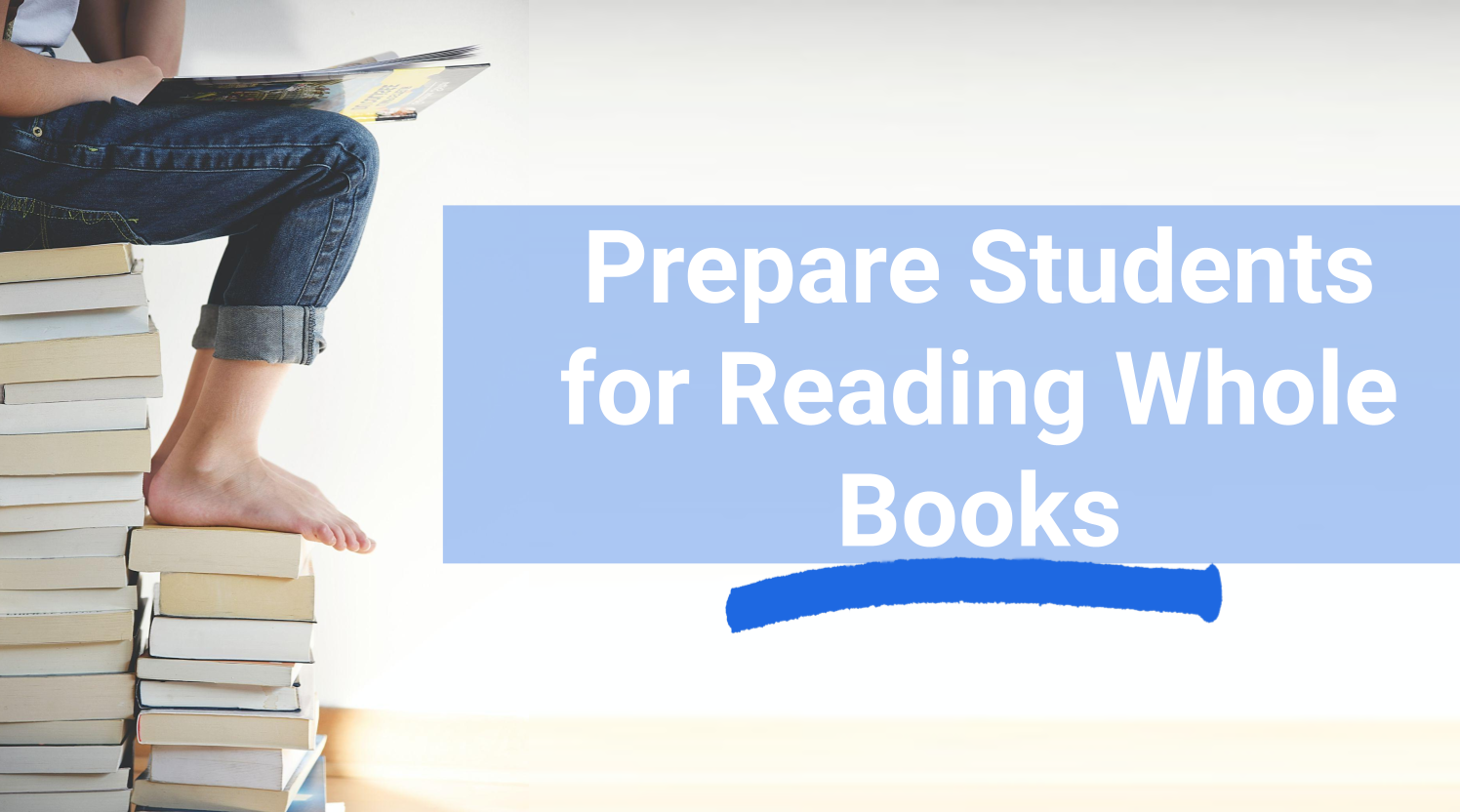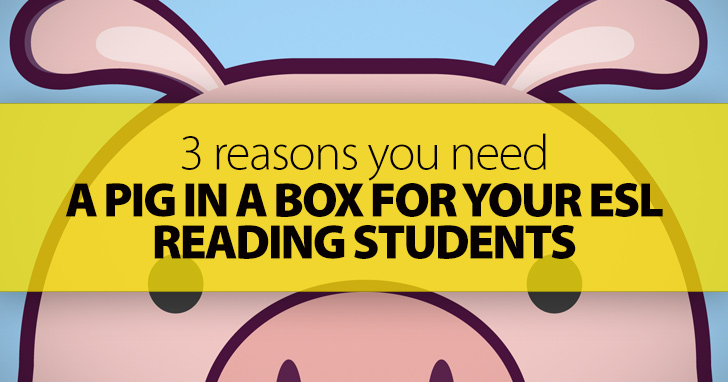4 Easy Ways to Prepare Students for Reading Whole Books


Texts created specifically for ESL purposes are less complex in sentence structure, use limited vocabulary, and give less description and figurative language. With native speaker literature, these crutches are out the door, and your students will have to tackle all of these reading challenges. Therefore, the more you can do to help them understand and retain what they read, the better off they will be. This technique, creating a book box, is actually something teachers of native speakers use in their classrooms, but it is also a great resource for ESL students. Here’s what it is and how to make one.
A book box is very simple. It is a box that holds a collection of items related to a book students will read. The outside of the box is labeled with the title of the book and decorated with pictures related to the story students will read.
For example, a book box for Charlotte’s Web might contain plastic figures of a pig, spider, and mouse. It might have a picture of one of Charlotte’s webs, a scrap of newspaper, and a medal. You could also include a picture of a young farm girl as well as a ticket from a fair or carnival.Inside the box, students will find three to five (or more) objects related to the book and a copy of the book itself.
A book box is a great introduction to a book students will read. Prepare your box before students start reading their book, and then bring the box into class the day you introduce the book. Show your students the box, point out the title of the book, and explain that the box represents different things they will read about in the book. Ask students to look at the outside of the box and make predictions about what they will read. If you like, have students talk about the different words in the title of the book. Then open the box and bring out one object at a time. Ask your students if they know the word for the first object, and have them share any background knowledge they have about it.
Pass the pig around your classroom, and while you do, encourage individuals to share a story about an experience they had with a pig perhaps at a farm or a zoo. Ask them what kind of food comes from a pig. As they talk and you ask questions, write any pertinent vocabulary on the board. Once the discussion about that object is complete, bring out the second object and repeat the process. Finally, bring out the book itself, show students the cover, and ask them to make predictions about what they will read in the book based on the book box and the cover of the book. If you like, have students write their predictions down to revisit after they have read the book.For example, if you brought out a small figure of a pig, ask students what they know about pigs.
A book box has many benefits for ESL students. One benefit is the ability to introduce new vocabulary in a natural and low pressure setting. You can see how much vocabulary related to your topic students already know by what they say when you introduce the items. You can also give them words related to the objects that they will need to know when they read the book but may not know already. In the Charlotte’s Web example, these words might include web, ham, bacon, and county fair. Giving your students vocabulary this way is more interesting than simply handing out a list of key vocabulary, and it’s not as stressful as encountering the words for the first time on the pages of the book.
One key to helping ESL students, and any students really, understand what they are reading is to help them recall previous experience with the topic at hand, also known as activating the schemata. When students have prior knowledge in the forefront of their minds as they read, they will retain the new information as they make connections between it and the knowledge they already have. When you bring objects out of your book box and talk about them, students will recall anything they already know about the topic, and that will help them make new connections with the material they will read in the book.
In addition, giving students objects to handle as you discuss a book engages their kinesthetic senses. You will reach learners that do best when they have something to hold and manipulate as they learn. You might also find that students who have a hard time sitting still during lectures have an easier time listening when they are doing something as the class discusses the topic. In short, your students will be engaged, and when they are interested in the book even before they open the cover, you can be confident you are doing a great job as their teacher.

Making a book box is really quite simple. Just follow these 4 steps.
As you do, note any objects or characters that are important in the book. For example, if you were reading The Giver you might note the importance of the apple, a bicycle, and a blue eyed baby.
A shoebox is just about the right size for holding small books and objects, but you might prefer to use a clear storage container (the flat 13x13 boxes for scrapbook storage work well), a basket, a coffee can, or any other container you have on hand or can store easily in your classroom.
Choose pictures related to the book for the decorating the outside of the book. Then choose three to five items to include in the box that will elicit the experiences and vocabulary you want your students to have before reading their book.
You might also want to leave the box out in your classroom so students can look through it during free study periods. If you choose to make a book box for every book your students will read, you might even want to start a collection in a corner of your classroom for students to browse at their leisure.
Once you’ve tried using a book box with your ESL students, you will see how effective it can be in increasing vocabulary, activating background knowledge, and increasing comprehension during reading. Book boxes can serve another function as well. They are a creative way for students to share with their class a book they have read on their own. If your students get much out of the book boxes you create, challenge each of your students to create a book box of their own about a book they read on their own. Presenting the box will give them a chance to talk in front of the class and might also encourage their classmates to pick up a new book.
What results did you see?